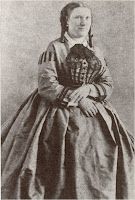
Alexander Rodchenko - Advertisement: “Books!” 1925 (Davies, Denny, Hofrichter, Jacobs, Roberts, Simon 1006)
One of my favorite definitions of research is to search and search again. This is in keeping with the etymology of word research, from the Old French word recercher, to search again. This is what we have been doing when you wondered why we were not leaving marks on our blog… Our search, our exploration of portraiture continues. We have not ceased our investigation. We have instead been involved in individual research projects. Each person selected a portrait artist, and has been pursuing a research thesis that involves some aspect of human character. The research projects culminate in a written paper, an oral presentation, and a blog summary. The research presentation ends with prompts, asking classmates to respond to questions or ideas relating to the project artist and the thesis’ character issue. The blog summary is essentially a précis of the research project. Classmates are responding to the prompts in the comment portion of the blog précis. Since some class members have opted for some degree of anonymity, not using their entire names on their blog links, I will list the blogspot site identifier, the research title, and the day each person presents the oral portion of their research. The blog précis is posted the day of the presentation. Classmates’ responses will appear two days later. The links are to the right, under the CLASS BLOG LIST.
alicia anne - Botero’s Inconvenient Truth, April 13
ashley k - Henri Carier-Bresson: The Man Behind the Lens, April 8
Carrie2009 - Renoir: The Quest for True Painting, April 22
Casey - A Repressive and Fallacious Society: The Insights of a Madman, April 1
Dawn_fire - A Hidden Truth, March 25
E's UH280 Blog - Life on the Fringe with Diane Arbus, March 30
Erika W - David Hockney: A Life in Paint, April 10
Jared TennisWriter Brickman –The Face of Criminality, April 1
Jbilimoria – Dorothea Lange: A Beacon of Hope, March 27
Jenn K. – No Transitions: Reality to Distortion, April 24
Josilyn – Diego Rivera: A Politician in His Own Right, March 23
jschillios– Hieronymus Bosch: Radical Heretic or Religiously Devoted? April 8
K-Slice – W. Eugene Smith: Bearing Witness to the Human Condition, April 22
Kayla – Escapism and Realism, April 15
Kelleykristine – Botticelli’s Beatrice, April 13
Keora – Herb Kawainui Kane: Preservation through Paint, March 30
Kfreese – Influence, Innocence, and Identity: Sargent’s Creations, April 3
kyle2h – Alice Neel’s Life-Inspired Art, April 20
Nicholas Lawrence – Painting with Photographs, April 10
Pharangaisee – A Rope in the Sky: The Eyes of Odilon Redon, April 6
R. Hageman – Chipping away at the veil of Magritte, March 23
Shia – Man in the Shadows, April 20
Sj – Caravaggio: Conflict and Contradictions, March 25
UH 280- Erin S. – Steve McCurry’s Familiar Faces, April 15
uh280 edhille – Historian or Pleaser of Patrons? April 17
Wonder Woman – Through the Lens, April 6
Davies, Denny, Hofrichter, Jacobs, Roberts, Simon, Janson's
History of Art. Seventh Edition. Upper Saddle River,
NJ: Pearson Prentice Hall, 2007.




